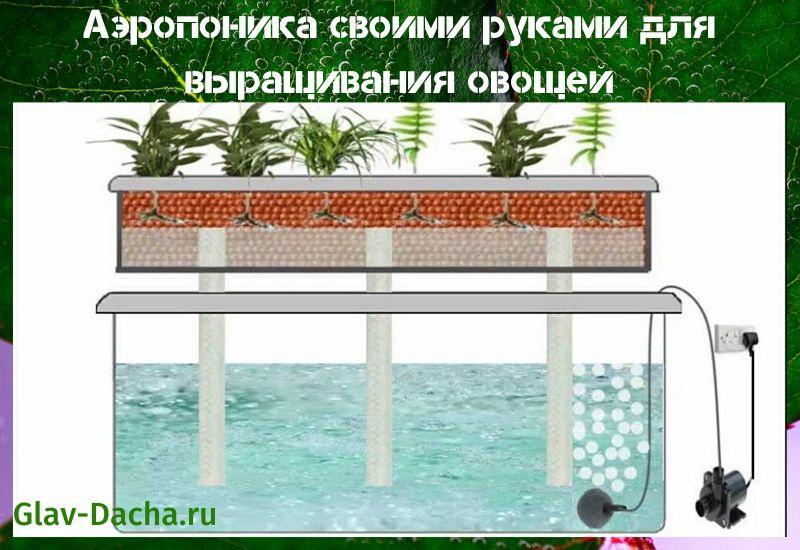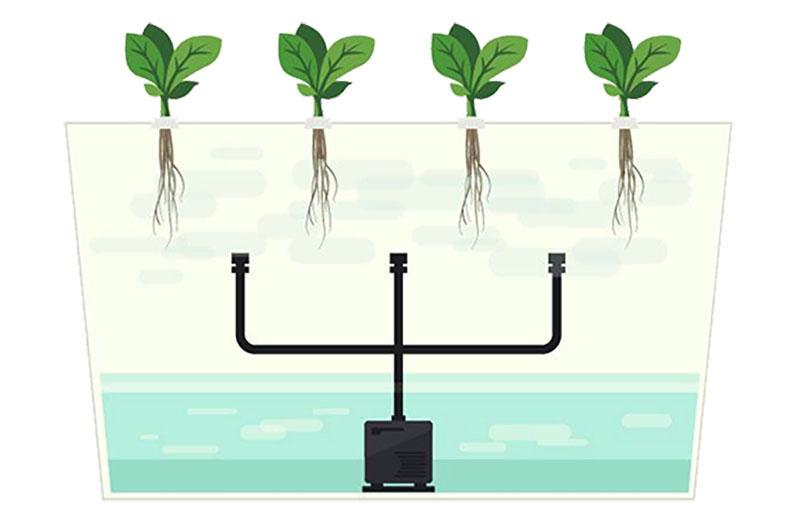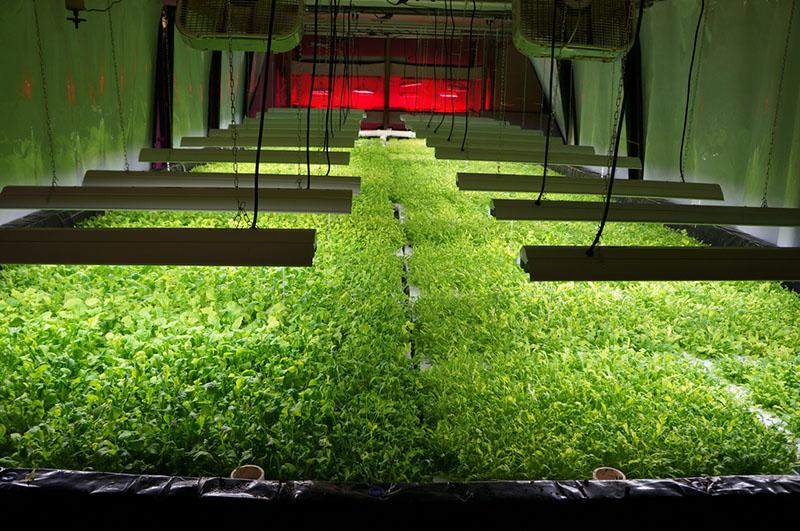DIY aeroponics for growing vegetables
 Modern methods of growing plants are increasingly found not only in industrial production. Do-it-yourself aeroponics is also arranged by amateur gardeners for the production of vegetables at home. This method, although it requires special equipment, is quite affordable and is considered an environmentally friendly production. Aeroponics allows you to grow vegetables and greens without soil, get a rich harvest literally out of thin air.
Modern methods of growing plants are increasingly found not only in industrial production. Do-it-yourself aeroponics is also arranged by amateur gardeners for the production of vegetables at home. This method, although it requires special equipment, is quite affordable and is considered an environmentally friendly production. Aeroponics allows you to grow vegetables and greens without soil, get a rich harvest literally out of thin air.
Aeroponics concept


The composition of the solution, the droplet size, the interval between irrigations are selected individually for each crop, depending on the conditions. The main thing is that the roots do not dry out.
Advantages of the method

Many modern farmers consider the aeroponics method to be the technology of the future, which will take a leading position in the intensive production of vegetables:
- No substrate required, no disinfection, no dirt and dust.
- Free access of oxygen and balanced root nutrition contribute to the rapid growth and development of biomass.
- In artificial conditions, it is easier to create a suitable microclimate and favorable conditions for a particular crop.
- The damage from pests is reduced, labor-intensive weeding and soil disinfection are not required. It is enough to flush the system before planting.
- Process automation reduces manual labor costs.
- Rational use of areas due to harvesting all year round in several stages. Aeroponic installation can be used in several tiers.
DIY aeroponics is quite possible
 Despite the fact that aeroponics is a high-tech production method using special equipment, it is quite accessible to every interested gardener. The aeroponic system is assembled from consumables found in hardware and plumbing stores. An installation can be created for a single pot or consist of a complex branched system for irrigating entire plantations. Do-it-yourself aeroponics can provide a year-round supply of fresh greens for your family or become the basis for the development of a profitable business.
Despite the fact that aeroponics is a high-tech production method using special equipment, it is quite accessible to every interested gardener. The aeroponic system is assembled from consumables found in hardware and plumbing stores. An installation can be created for a single pot or consist of a complex branched system for irrigating entire plantations. Do-it-yourself aeroponics can provide a year-round supply of fresh greens for your family or become the basis for the development of a profitable business.
Materials and equipment

To organize aeroponics, equipment should be selected taking into account the volume of production, but the list of materials is general:
- Capacity for nutrient solution.
- An opaque, flat container or grow tank. In a transparent container, the risk of developing blue-green algae increases, which use a nutrient medium, create competition for cultivated plants and pollute the system with waste products.
- Shelves-holders made of moisture-resistant materials (polystyrene, foam rubber) for installing pots.
- Flexible hoses of the required diameter with sealed joints and adapters.
- Aeroponics nozzles are selected taking into account the biological characteristics of the plant root system. The softer the roots, the finer the solution needs to be sprayed to make it as accessible as possible for nutrition.

Considering that the same equipment is used to grow different crops, it is ideal to choose universal nozzles that can spray water into a light mist.
The pump for supplying the solution to the nozzles can be diaphragm or diaphragm. Vegetable growers use car wiper pumps and aquarium compressors for aeroponics. Purchased aeroponics pumps are inexpensive and pay off quickly.
Electronic or mechanical timers for setting the power mode. A mechanical timer is more reliable, but it can be noisy and cannot provide a short interval (5 minutes or less) between sprays.
When purchasing an electronic timer, you should consider the possibility of periodic replacement of the battery.
Assembling the aeroponic system
 A pump with a timer is connected to the tank. Nozzles are installed at the bottom of the tank, hoses are hermetically attached to them, which are connected to the pump with the second end. Nutrient solution from the tank using pump fed through the hoses to the nozzles. The aeroponic installation is switched on at the right time by a timer.
A pump with a timer is connected to the tank. Nozzles are installed at the bottom of the tank, hoses are hermetically attached to them, which are connected to the pump with the second end. Nutrient solution from the tank using pump fed through the hoses to the nozzles. The aeroponic installation is switched on at the right time by a timer.
The size of the holes for planting or the pot is chosen so that the plant feels comfortable and does not fall into the tank.
Aeroponic installations
Do-it-yourself aeroponics can be arranged using different equipment:
- Water pump.

- Sometimes in aeroponic systems, in order to increase efficiency, ultrasonic waves are used, which, when exposed to a solution, form bubbles. Bursting, they emit microparticles of moisture in the form of a fog. The method significantly increases the cost of the installation, requires a solution cooling system, since the formation of microdroplets requires a temperature twice as high as for irrigation of the roots.

- The movement of the solution to the roots can also be ensured with the help of an external air compressor, which is connected to the tank.

A sensor and solenoid valves are required to control the pressure level and ensure operation. Amateur installations use a car compressor, but it is very noisy. An aquarium compressor is also used, which provides low pressure. This method is more suitable for small aeroponic plants for growing greenery at home.
The aeroponic system is:
- reversible, when the nutrient solution circulates constantly and after condensation, flows back into the reservoir;
- irreversible when the solution is used only once.
DIY aeroponics - preparing a nutrient solution
 The composition of nutrient solutions is designed for various plants, their age and can be used at home. At the same time, it is necessary to constantly monitor the condition and intensity of plant growth in order to make adjustments in a timely manner. To prepare the solution, do not use unsettled tap water to avoid unnecessary impurities. Distilled, pure rainwater or water softened with special filters is best suited. Salts are introduced into water after their preliminary dissolution in separate containers.
The composition of nutrient solutions is designed for various plants, their age and can be used at home. At the same time, it is necessary to constantly monitor the condition and intensity of plant growth in order to make adjustments in a timely manner. To prepare the solution, do not use unsettled tap water to avoid unnecessary impurities. Distilled, pure rainwater or water softened with special filters is best suited. Salts are introduced into water after their preliminary dissolution in separate containers.
Very interesting, can you buy a ready-made one from you?